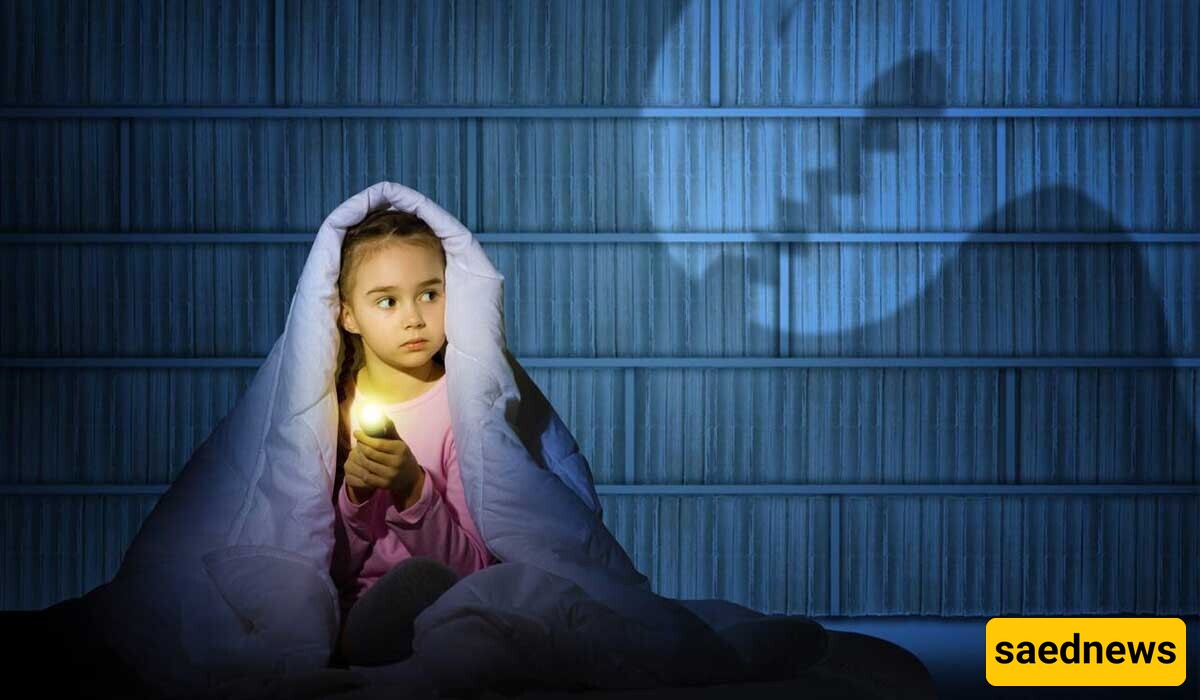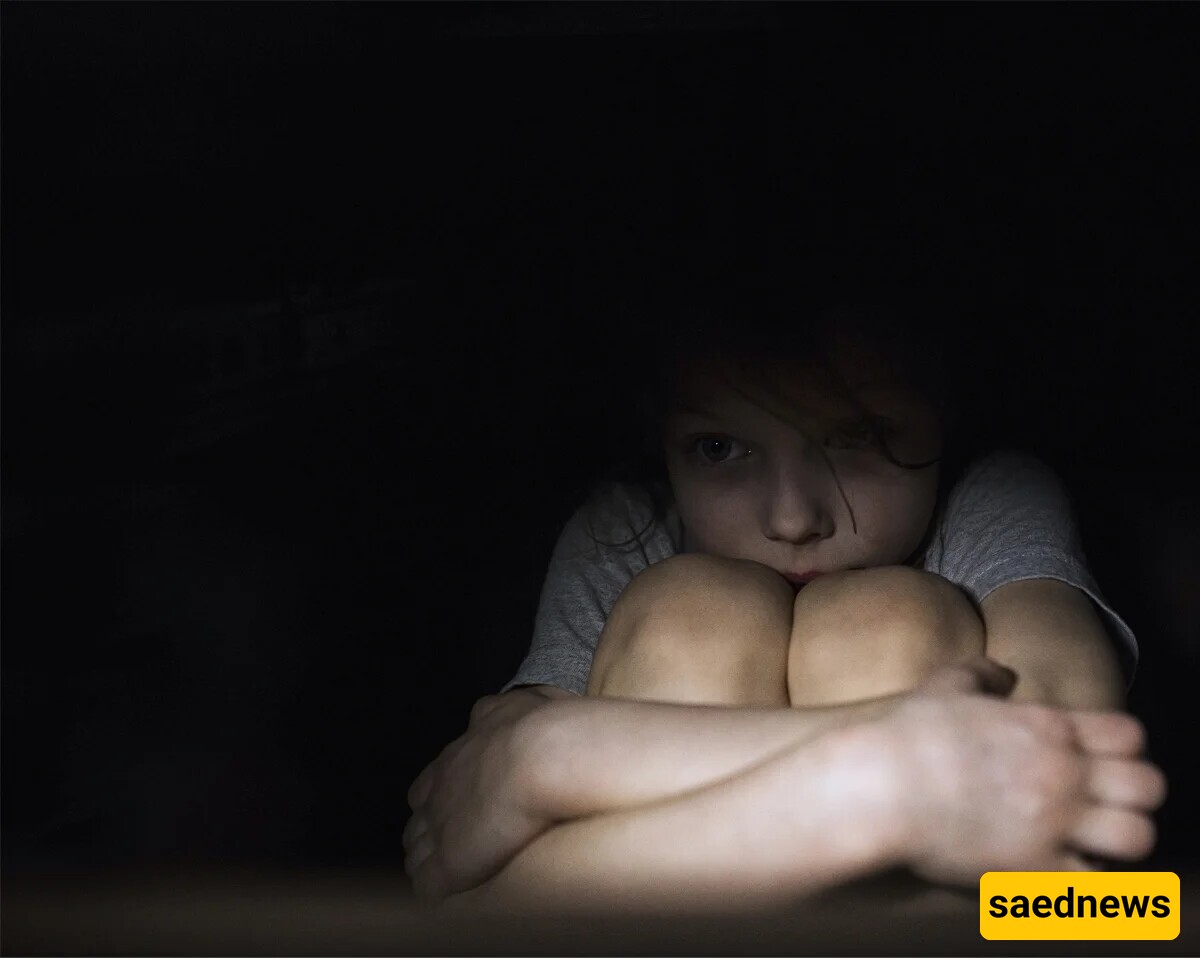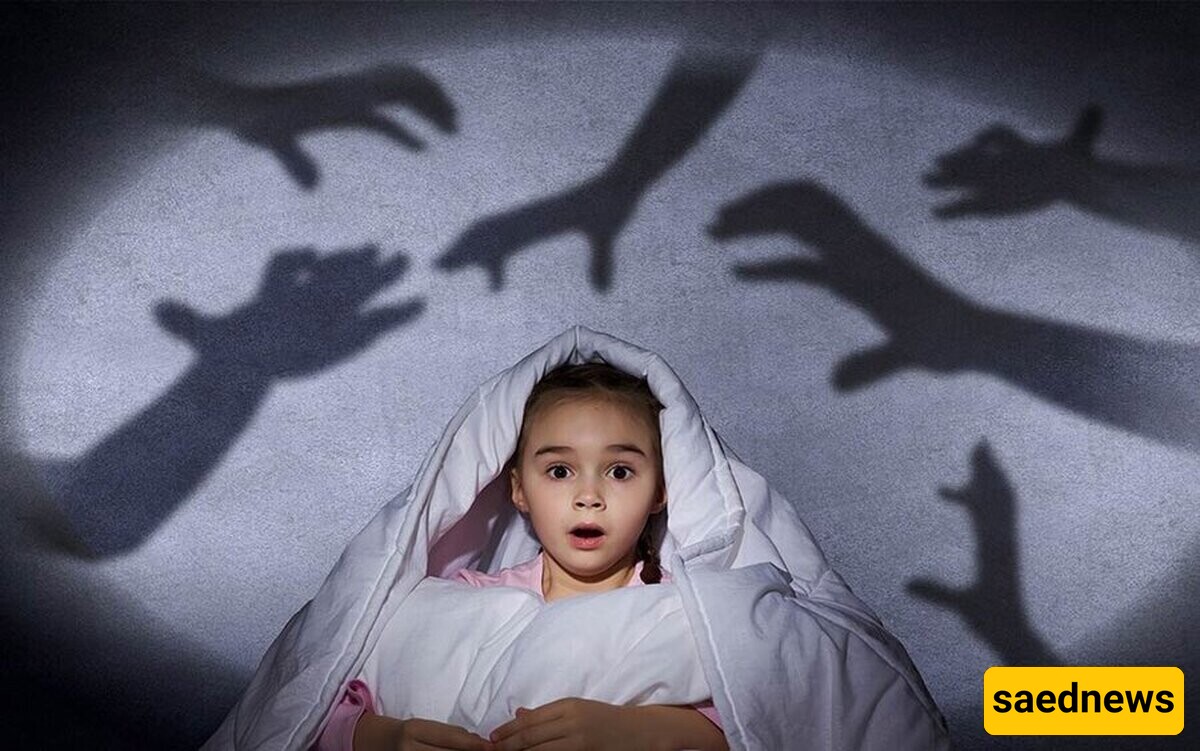Saed News: Regardless of the child's age and how long they have been struggling with the fear of darkness, it is never too late to start treatment and put an end to this fear. By following these tips and, if necessary, seeking help from child specialists and psychologists, you can teach your child to combat and overcome their fears.

According to the Family Magazine section of Saed News, experts believe that darkness affects the senses of both children and adults. A person hears sounds and senses movement, but since they cannot see the source, they are more likely to experience intense fear. Feelings of insecurity and lack of confidence can also contribute to the fear of darkness, especially if the person is more afraid when alone.
Fear of Darkness: A Common Fear Among Children
Fear of darkness is a common and normal fear for most children. It usually begins as their cognitive abilities and imagination develop, and for some children, it never completely disappears.
Some children are more affected by this fear than others. Those with an anxious personality tend to be more vulnerable when facing such fears. They may constantly follow their parents and avoid entering a dark room alone. For these children, sleeping in the dark at night is a nightmare. It takes them hours to fall asleep, and due to their deep fear, they wake up multiple times during the night.
Parents must equip their children with coping mechanisms to help them face and overcome their fears.
What is Fear of Darkness or Nyctophobia?
Nyctophobia is an intense fear of darkness or nighttime, often accompanied by severe anxiety and depression.
This fear becomes a problem when it is excessive and irrational, disrupting daily life. Fear of darkness usually starts in childhood and is considered a natural part of the developmental process.
This phobia is often triggered by the absence of visual stimuli at night. If the fear of darkness negatively impacts sleep patterns and daily life, consulting a specialist is necessary.
What Causes Fear of Darkness?
The fear of darkness may have evolutionary roots, as predators often hunt at night. However, the fear is usually not due to the darkness itself but rather the negative thoughts that arise in the dark.
In darkness, people feel less secure. Since vision is impaired and it is difficult to examine the surroundings, the other senses become more sensitive. People often experience intense fear of the dark because they cannot properly see their environment.
Exposure to darkness challenges the brain’s ability to process other senses, which can contribute to fear.
Brain Changes and the Fear of Darkness
Beyond the brain changes that occur in the absence of light, increasing anxiety, fear of darkness may also be linked to concerns about violence or potential attacks.
Since a person cannot see their surroundings in the dark, they may imagine hidden threats lurking. Therefore, the main cause of fear of darkness is not the darkness itself but the potential hidden dangers within it.
This is why horror movie creators often use darkness to scare viewers.
Some psychoanalysts believe that fear of darkness may be connected to separation anxiety, particularly from someone the person is deeply attached to, such as a parent. This is especially common in children experiencing separation anxiety.
7 Techniques to Help Children Overcome Fear of Darkness
1. Do Not Ignore Your Child’s Fear of Darkness
One of the most important ways to help your child is to first acknowledge and validate their fear.
Often, parents mistakenly tell their children that everything is fine, they are not afraid, and their fear is not real.
Avoid making this mistake. Instead, let your child know that you understand and accept their fear. Explain that while their fear is real, it is a common experience for many children.
Tell them that their fear comes from not being able to see their surroundings clearly. When we cannot see what is around us, our imagination creates scary images that cause fear.
Show them the correct way to deal with it: if they think there is a scary object in the room while in the dark, they should turn on the light and see for themselves that there is nothing to fear.
2. Make the Light Switch Easily Accessible
Place the light switch within your child’s reach, ensuring their bed and essential items are near the light source.
Consider your child's height so they can easily turn the light on and off.
Having control over the light switch gives them a sense of power, which can help reduce their fear of darkness.
3. Talk to Your Child About Their Fear
Children have unique and unpredictable fears. A child psychologist once mentioned that one of their young patients, who was afraid of the dark, also had nightmares about french fries.
When you ask your child what they are afraid of, they might mention monsters or other scary creatures. Parents should ask specific questions to understand the child's exact fears.
Sometimes, we overlook children's TV programs and forget that certain scenes might be frightening for them. For example, a child might be scared of a rabbit in a cartoon being chased by a wolf and have recurring nightmares about it.
Although it may be challenging to control everything a child sees or hears, discussing stories, images, and their imagination can help reduce their fear.
4. Use a Nightlight or Other Light Sources
Bright lights can disrupt sleep, so keeping the main light on is not ideal. Finding the right level of dim light can be tricky.
Complete darkness can increase fear and keep the child awake all night, while dim lighting might create shadows on the walls, worsening the problem. Using a small nightlight in the child's room is a good solution.
5. Eliminate Scary Shadows
Many children talk about certain shadows in their room that scare them, but they often do not share this with their parents.
A specific object in the room might be casting a shadow that frightens the child. Remove such items, like dolls, hats, or toys.
When the nightlight is on, sit with your child on their bed and ask them to point out the shadows that scare them. Identify the object causing the shadow and explain:
"If I move this doll, the shadow will disappear. See? The shadow is not real; it was just your doll creating it."
6. Play with Shadows to Reduce Fear
Playing with shadows is a great way to desensitize a child to their fear. Teach them how to make shadow puppets on the wall using their hands.
By making a game out of shadows, you help them understand that shadows are harmless, reducing their fear of the dark.
7. Introduce Reward-Based Challenges
Create small challenges for your child and reward them when they face their fears.
For example, a mother might say:
"I can walk with you into the dark room, but if you go in alone to get what you need, you will receive a special reward."
The type of reward depends on you and your child—it can be something small or an internal reward like praise.
Some parents prepare a mystery gift box, allowing their child to pick a random prize after overcoming a fear. However, always give your child the option to choose whether or not they want to participate in the challenge.
Forcing a child into situations they are not ready for can have negative long-term consequences.
If your child's fear of darkness becomes overwhelming and significantly impacts their daily life, seek help from child psychologists and therapy centers.
A child psychologist has the expertise to provide specialized treatment, helping your child overcome their fear in a shorter period.




